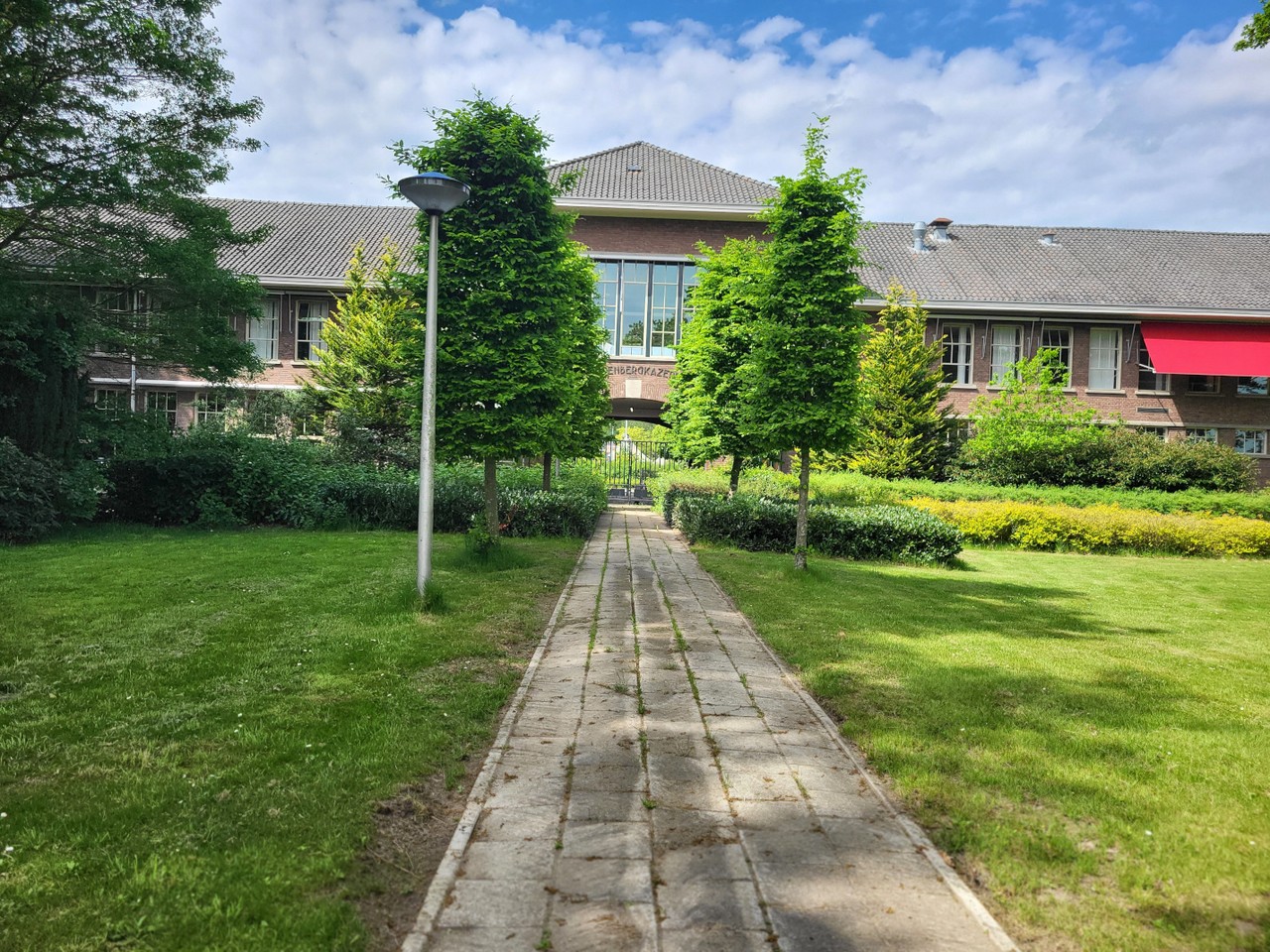Originally established in the late 1930s for the Dutch armed forces, the Westenberg Barracks in Schalkhaar is now used as an asylum seekers’ center, mostly for accommodating war refugees. The threat of war thus remains an unintended recurring theme at Spanjaardsdijk 47, whose gatehouse is a national monument.
Construction was abruptly interrupted at the end of the 1930s by the outbreak of World War II. The German occupiers completed the barracks in 1940 and housed the infamous Police Training Battalion (POB) Schalkhaar there, with the goal of fully controlling the Dutch police apparatus.
As a direct consequence of the police’s weak response during the February strikes in 1941, a drastic reorganization modeled on the German system was implemented. The municipal police, state police, and border police corps were merged into the state police and placed directly under German command. This resulted in strong militarization.
To complete the Nazification of the police force, the special police school was established in Schalkhaar in July 1941 under the supervision of SS General Hanns Rauter, the German police chief in the Netherlands and highest authority. Early 1942 saw the first graduating class, whose members were dispersed over corps throughout the country. By September 1942, for their harsh actions against Jews and assistance with raids in Amsterdam, they were portrayed in the underground press as “underworld figures and obedient Nazi henchmen.”
The term “Schalkhaarder” was a derogatory term during the war and long afterward. The barracks also housed the Storm Westenberg unit of the Dutch SS. The importance the German occupiers attached to this is shown by a visit of Nazi leaders Heinrich Himmler and Arthur Seyss-Inquart to the location in February 1944. Between 1941 and 1944, approximately 3,000 Dutch people were trained there under German supervision in SS ideology.
The name Schalkhaar quickly became synonymous with “collaborating police.” Those offered training in Schalkhaar sometimes faced a dilemma: either a police job or forced labor in Germany (Arbeitseinsatz). Even well-meaning officers faced a dilemma. Resigning meant their position would immediately be filled by an NSB member who had no qualms about enforcing anti-Jewish measures. Staying on the job meant getting one’s hands dirty.
After a call from church circles in 1943, some officers openly began refusing to work. Others went into hiding. To prevent this, the occupiers introduced a special measure, the Sippenhaft. Family members of police officers in hiding were to be arrested and sent to Camp Vught. By the end of 1943, Vught held 150 family members of policemen. In total, about 600 policemen went into hiding between summer 1943 and summer 1944.
The struggle of three generations with the past of the notorious Nazi police training is depicted in the documentary “My Grandpa Was a Schalkhaarder” (2025) by Wouter Rutgers. Together with his father Stefan, he explores the hidden family and war history of his grandfather Wim.
